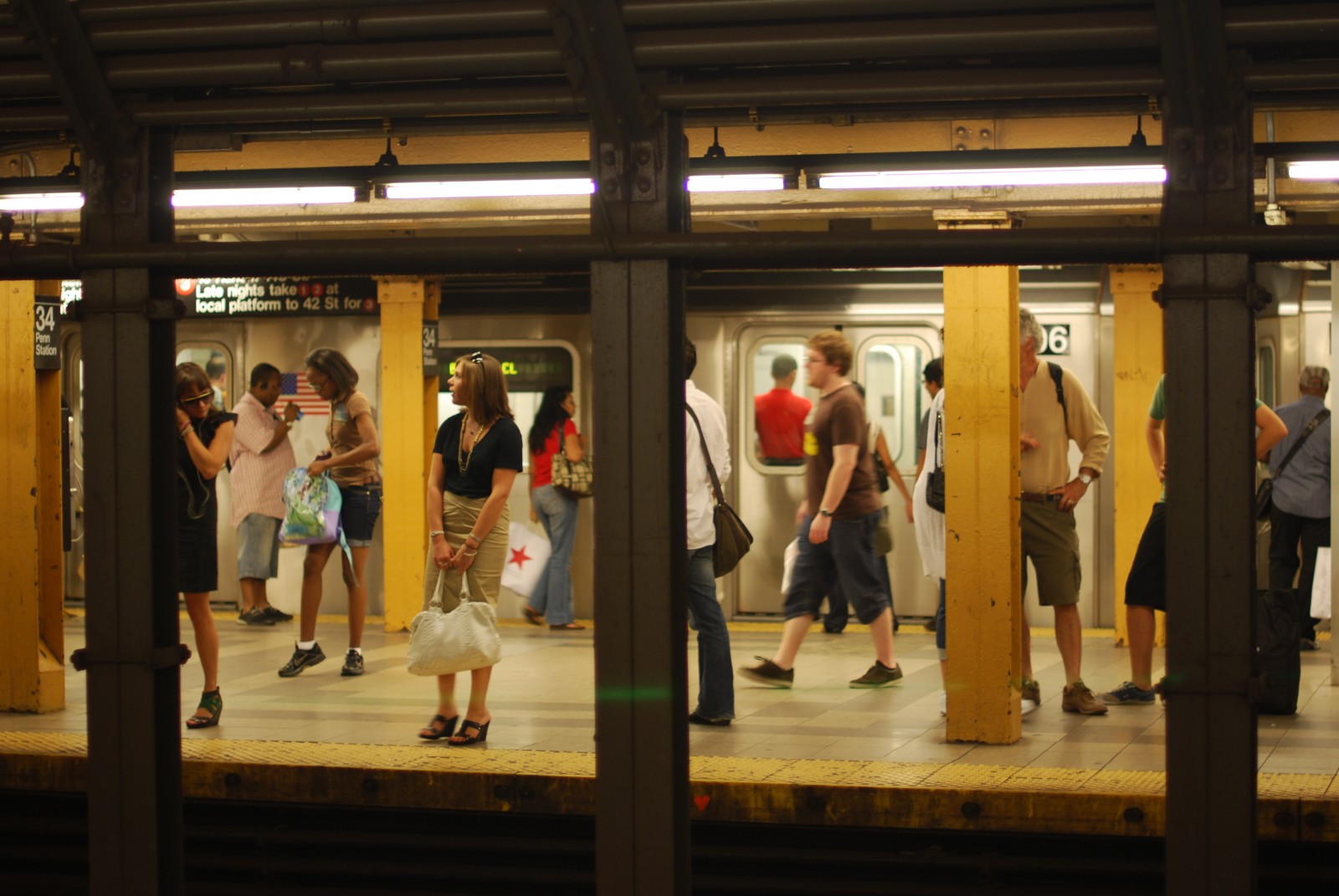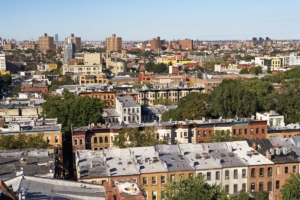Brace yourselves, class of 2016. As you put away your mortarboards and diplomas, another challenge awaits you. In addition to landing a job, next in line is finding affordable housing – especially in New York City.
While the Big Apple is known for its thriving finance, media, and business service industries (and a growing tech sector), it is also has some of the highest living costs in the world. This hard truth makes NYC an extremely challenging place to live — especially for recent grads on a starting salary.
So, where can grads coming to NYC afford to live? StreetEasy estimated how much college graduates are expected to make in New York City for the top 20 most popular majors and identified neighborhoods where they’ll most likely find affordable units to rent.
Among all recent college graduates working in New York City, nearly a quarter of them are business majors, followed by fine arts, social science and communications. The expected median income varies greatly by the major. Among the top 20 popular majors in New York City, engineering has the highest expected starting salary of $58,670, and philosophy and religious studies have the lowest at $27,530.

(Source: Siri B.L. via Flickr Creative Commons)
Budget Up to 30 Percent on Rent Costs
In budgeting housing costs, the rule of thumb is to keep costs at or below 30 percent of total income in order to remain “affordable.” In 2015, the median monthly asking rent for a studio/1-bedroom apartment was $2,500 in New York City and $2,800 in Manhattan. Even for those who graduate with an engineering degree, spending 30 percent of their expected starting salary provides a housing budget of $1,466.75. While it’s not a figure to make you blink twice, it’s becoming increasingly difficult to find an apartment for under $1,500 in New York City.
What You’ll Make and What You’ll Pay: Breakdown by Degree
| Major | Expected Starting Salary | Share of NYC Graduates by Major | Affordable Rent (30% Rent-to-income ratio) | |
| 1 | Business | $56,550 | 24.70% | $1,413.75 |
| 2 | Fine Arts | $37,427 | 13.40% | $935.68 |
| 3 | Social Sciences | $44,870 | 12.40% | $1,121.75 |
| 4 | Communications | $41,870 | 8.00% | $1,046.75 |
| 5 | Psychology | $36,893 | 4.90% | $922.33 |
| 6 | English Language, Literature, and Composition | $40,250 | 4.40% | $1,006.25 |
| 7 | Medical and Health Sciences and Services | $57,840 | 3.30% | $1,446.00 |
| 8 | Education Administration and Teaching | $37,427 | 3.20% | $935.68 |
| 9 | Engineering | $58,670 | 3.20% | $1,466.75 |
| 10 | Computer and Information Sciences | $54,150 | 2.70% | $1,353.75 |
| 11 | Biology and Life Sciences | $44,870 | 2.60% | $1,121.75 |
| 12 | Criminal Justice and Fire Protection | $31,860 | 2.20% | $796.50 |
| 13 | History | $43,520 | 2.10% | $1,088.00 |
| 14 | Physical Sciences | $51,820 | 1.50% | $1,295.50 |
| 15 | Liberal Arts and Humanities | $38,350 | 1.40% | $958.75 |
| 16 | Mathematics and Statistics | $56,550 | 1.30% | $1,413.75 |
| 17 | Public Affairs, Policy, and Social Work | $39,340 | 1.20% | $983.50 |
| 18 | Architecture | $47,210 | 1.10% | $1,180.25 |
| 19 | Linguistics and Foreign Languages | $44,870 | 1.10% | $1,121.75 |
| 20 | Philosophy and Religious Studies | $27,530 | 1.00% | $688.25 |
Affordable Housing Tips: How to Stretch Your Budget
For those with the financial flexibility, spending a bigger portion of income on rent can make the housing search easier. But for students with other expenses, such as student loans, this can be an extremely burdensome choice. Outside of spending more of your income on rent, there are some possible solutions to bridge the gap between rent and income for college graduates. For one, consider having a roommate (or two) and secondly, look beyond Manhattan.
| Borough | Studio/
1 Bedroom |
2 Bedroom | 3 Bedroom |
| New York City | $2,500 | $2,900 | $3,200 |
| Manhattan | $2,800 | $3,800 | $4,800 |
| Bronx | $1,300 | $1,675 | $2,010 |
| Brooklyn | $2,150 | $2,500 | $2,900 |
| Queens | $1,800 | $2,275 | $2,750 |
| Staten Island | $1,238 | $1,600 | $1,956 |
Source: Median Asking Rent, 2015 (StreetEasy)
Students who team up with a roommate to rent an apartment widely open up their listing options. If you are a fine arts major and opt to live by yourself, only 11.3 percent of studio and one-bedroom inventory in New York City would fall within your budget, and that’s if you dedicate half (i.e., 50 percent!) of your expected starting salary to rent. By adding one roommate and looking for a two-bedroom apartment instead, available inventory increases by five times. In this scenario you’re still spending 50 percent of your income on rent, but 56.4 percent of two-bedroom apartments in New York City are within your budget.
Go Beyond Manhattan, Young Grad
Another solution for recent grads is to look outside of Manhattan to ease housing costs. While the median asking rent of studio/1-bedroom apartments in Manhattan was $2,800 in 2015, it was at least 23 percent cheaper in other boroughs. In the Bronx and Staten Island, median asking rents were less than half the Manhattan median. Across all majors and their corresponding starting salaries, the rental market is far more affordable in parts of Northern Queens and East Brooklyn — in particular Crown Heights (Brooklyn), Astoria (Queens), Bedford-Stuyvesant (Brooklyn) and Bushwick (Brooklyn).
For those with their hearts set on a Manhattan address, not all parts of the borough need to be avoided in the pursuit of staying within budget. Within Manhattan, higher volumes of affordable rental inventory can be found in Upper Manhattan — particularly in Washington Heights, East Harlem and Central Harlem – as well as Midtown West and the East Village.
The map below shows how many affordable rental units each neighborhood had in 2015 according to major and rent-to-income ratio.
[tableau server=”public.tableau.com” workbook=”gradAffordabilityV2″ view=”CollegeGradAffordability2016″ tabs=”no” toolbar=”no” revert=”” refresh=”yes” linktarget=”” width=”600px” height=”870px”][/tableau]
How did we do it?
We used 2011 to 2014 IPUMS ACS 1-year data for educational information of New Yorkers aged between 22 and 25 years old. Expected salaries are derived from Occupational Employment Statistics (OES) survey data using standard occupational classifications. Incomes are matched to the IPUMS sample by inferring the common occupations pursued by each major. For each major (and corresponding median salary of occupations associated with each major), we calculated monthly rent levels associated with 30, 40, and 50 percent of income and the number of rental listings on StreetEasy throughout 2015 that met such rent levels for every neighborhood with sufficient data. For zero roommates, we limited inventory to just studio and 1-bedroom listings; for one roommate, we limited inventory to just 2-bedroom listings; and for two roommates, we limited inventory to 3-bedroom listings.









